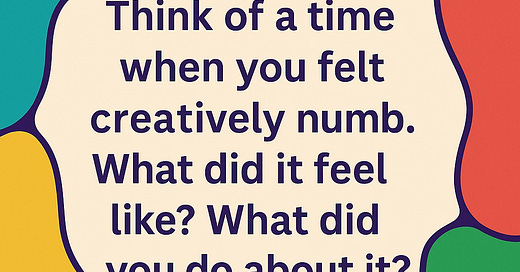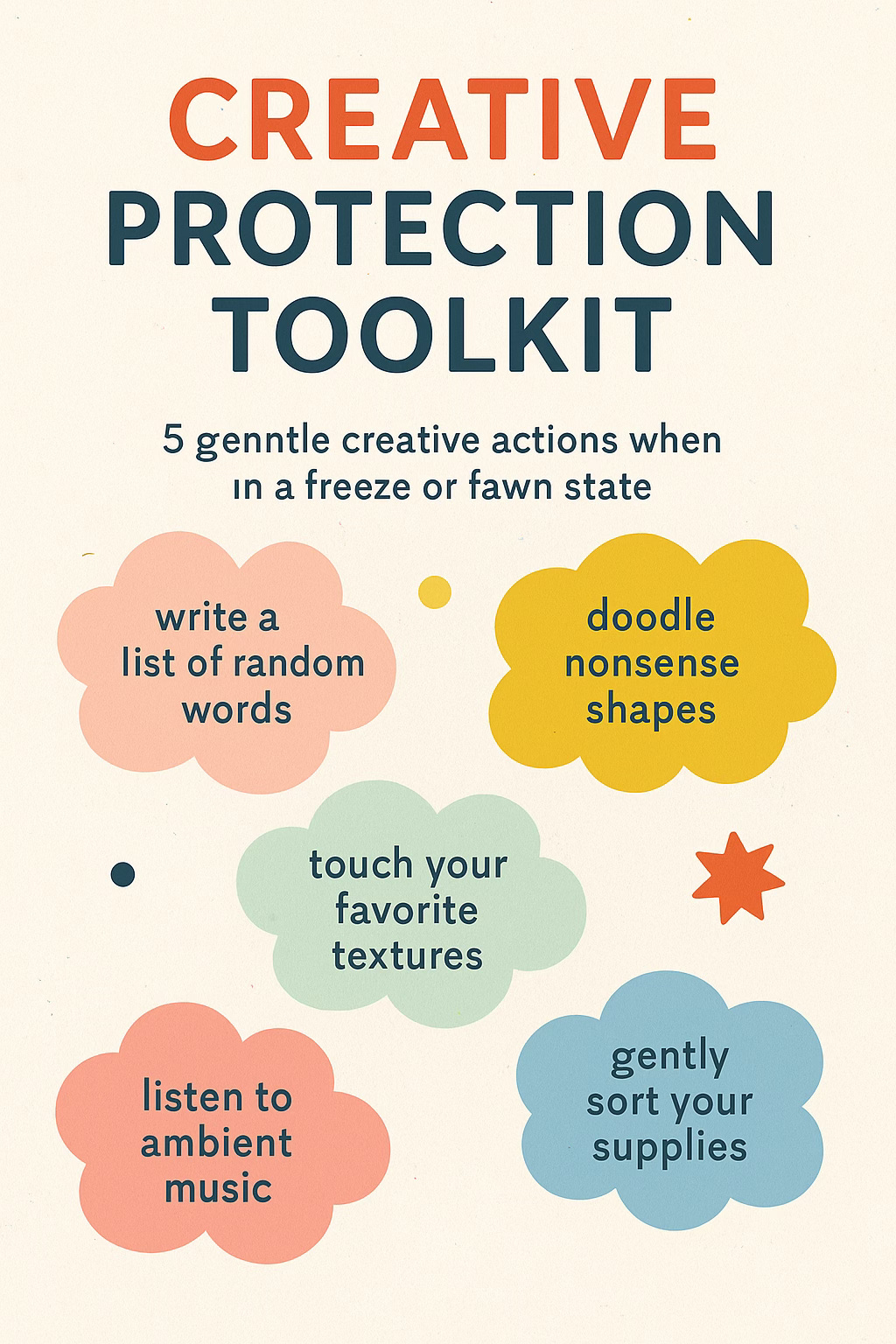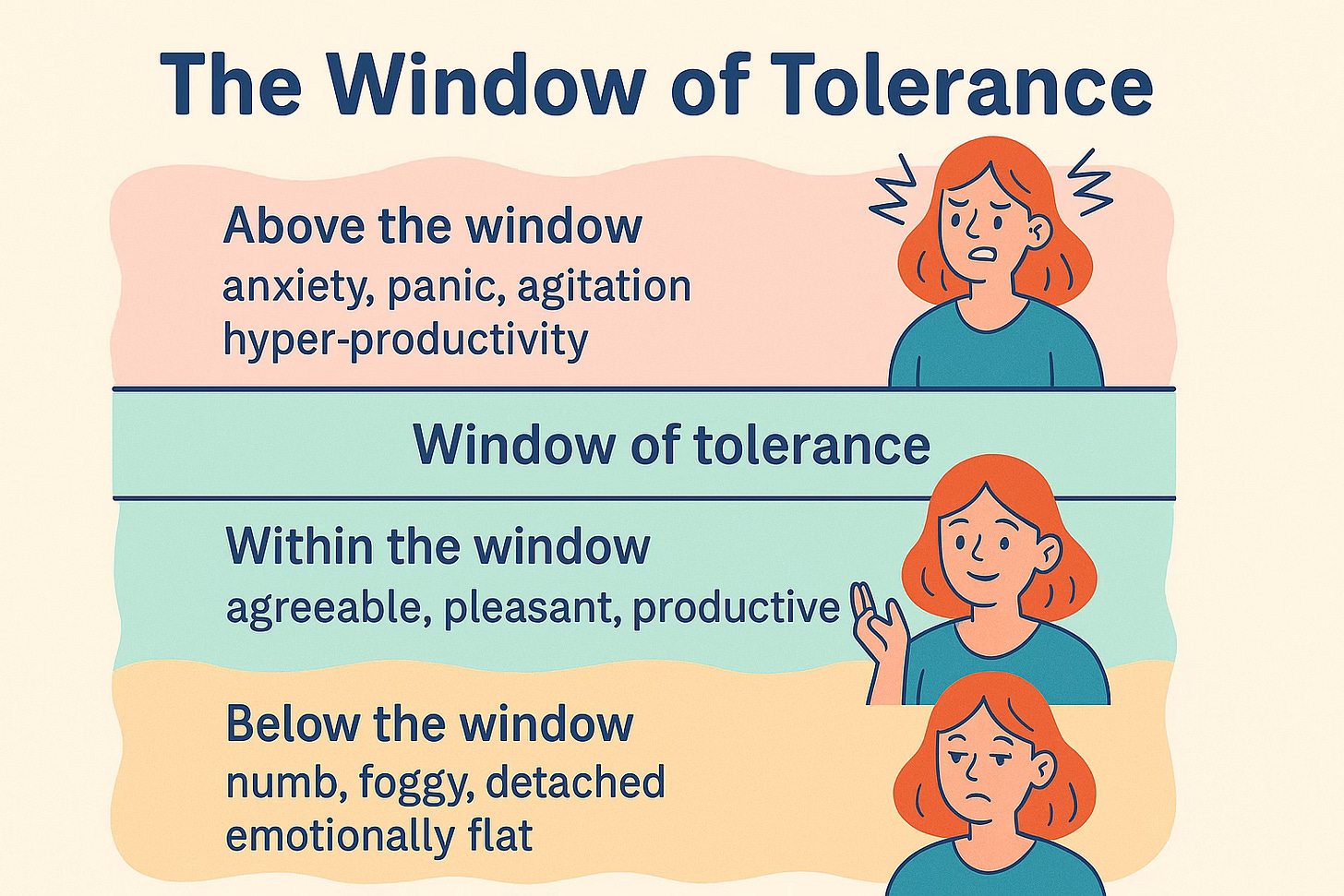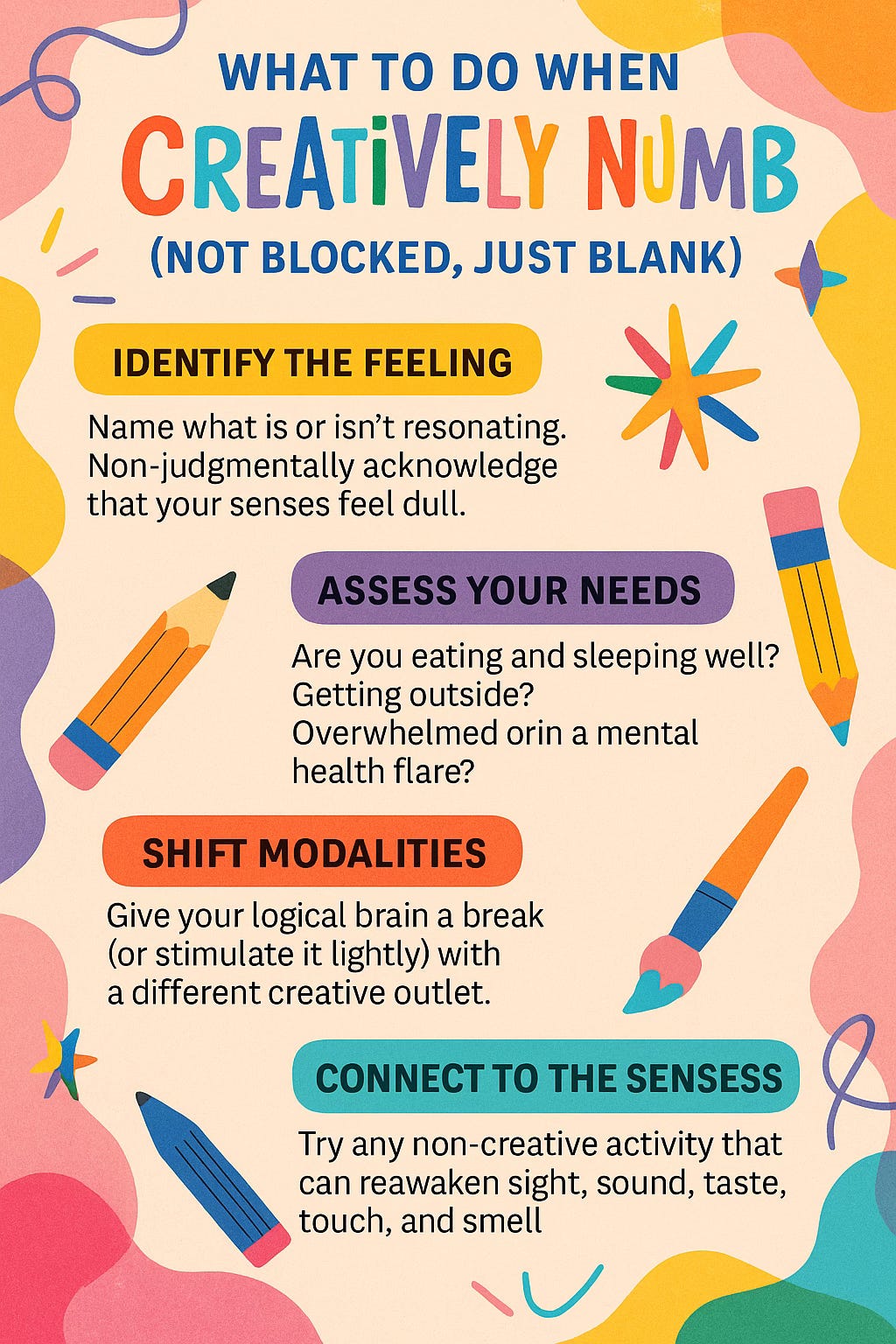What to Do When You Feel Creatively Numb (Not Blocked, Just Blank)
Why creativity sometimes feels flat, and how to gently reconnect with your artistic self
There’s a kind of creative silence that doesn’t feel like a block. It feels like a blank space.
Not frustration. Not resistance. Just stillness.
You aren’t fighting with the work. You’re not procrastinating either. You just don’t feel anything. You aren’t avoiding your art so much as forgetting why it mattered in the first place.
This is creative numbness. And if you're in it, you're not broken. You're responding to something real.
Why Creativity Sometimes Feels Flat
Many people associate creative block with frustration. You want to make something but can’t. That tension can be painful, but it’s active. Numbness, on the other hand, is quiet. There’s no urgency. No spark. Just a blank emotional screen.
I know this state intimately. I’ve lived inside it after grief, after burnout, after pushing myself through months of hyper-productivity. Sometimes, I come out the other side not empty, but emotionally unreachable. I remember a week where I kept picking up the same crochet project and putting it down again. Not because I didn’t want to work on it, but because I felt disconnected from the part of myself that used to know what I wanted to say with my hands. I wasn’t blocked. I just couldn’t feel it.
This is not laziness. This is not apathy. This is a form of creative disconnection that often links to what psychology calls the freeze response.
Dissociation, Freeze States, and Creative Disconnection
When you live with chronic stress, unresolved trauma, emotional fatigue, or long-term burnout, your nervous system can lose access to regulation. Instead of moving smoothly through states of activation and rest, it may shift into one of the body’s instinctive survival responses: fight, flight, freeze, or fawn.
Each of these states has a distinct texture:
Fight may show up as creative frustration or perfectionism.
Flight can look like restlessness, over-scheduling, or abandoning projects.
Freeze feels like stillness, numbness, or dissociation.
Fawn is a people-pleasing pattern—over-giving, over-committing, or creating to be liked rather than to express.
I tend to freeze or fawn, especially when I’ve moved beyond what my nervous system can comfortably hold. I either disconnect entirely from my creative self or start bending my voice to what I think others expect. Neither one feels like me. Neither one gives me access to my real creative rhythm.
These patterns are not flaws. They are protective mechanisms that arise when the system perceives threat, whether real or remembered. And while they are often necessary in moments of danger or overwhelm, they can become habitual responses to non-threatening situations if left unexamined.
The Window of Tolerance
In trauma-informed work, we often talk about the window of tolerance. This is the zone in which your nervous system can function with a sense of safety and engagement. You can feel emotions without being overwhelmed. You can access curiosity and creativity. You can respond instead of react.
When you’re above the window, you may experience anxiety, panic, agitation, or hyper-productivity (fight or flight).
When you’re below the window, you may feel numb, foggy, detached, or emotionally flat (freeze or dissociation).
And in some cases, you may stay within the window on the outside, while fawning underneath—staying agreeable, pleasant, or productive as a way of managing perceived threat or rejection.
Creative numbness often lives below the window of tolerance. Your body may feel sluggish or shut down. Your mind may go quiet. You might feel like a ghost inside your own practice.
This might sound like:
“I don’t feel like myself lately.”
“Nothing feels exciting, even when I try.”
“I’m not sad exactly. Just blank.”
“I look at my supplies and feel nothing.”
If you have a trauma history, a chronic health condition, or live with neurodivergence, this type of shutdown may feel familiar. It is not failure. It is your body’s way of protecting you by slowing you down or temporarily disconnecting you from overwhelm.
But when your creative process is part of how you make meaning, build identity, or regulate your emotions, this kind of detachment can feel especially painful. You might not even recognize yourself.
That’s why the path back is not about forcing productivity. It’s about gently expanding your window of tolerance. It’s about finding safe, small, sensory ways to reconnect with your creative self.
It starts with recognizing where you are.
And then listening for the thread that still wants to be found.
What Helps When Creativity Feels Far Away
The following strategies come from my own practice as an artist and from the work I do with clients in 1:1 creative wellness sessions. They are not meant to fix you. They are meant to meet you.
1. Start with sensation, not structure
When you can’t think your way into creating, try moving through your senses instead. Don’t start with the pressure to make something. Start with contact. Hold a skein of yarn. Smell a pen. Light a candle near your workspace. Play with color without purpose.
In Hook to Heal, I wrote:
“In moments of creative fog, I return to the feel of yarn between my fingers. Even when nothing else is clear, the repetition of stitch grounds me.”
Let your body re-enter the experience before your mind catches up.
2. Watch your work, don’t make it
If your current project feels too distant to touch, return to what you’ve already created. Look through old sketchbooks. Read a piece you wrote years ago. Not with critique. With curiosity.
There are days when I read my old blog posts like someone else wrote them. But then I come across a phrase that unlocks something. That recognition, that small pulse of creative memory, is often enough to soften the fog.
3. Remove the pressure of identity
When numbness lingers, it’s easy to start questioning your creative identity. You may think, “I don’t feel like an artist anymore.” That narrative compounds the numbness.
Instead, allow yourself to create without the need to perform as someone who is “a writer” or “a painter.” Let yourself collage, journal, doodle, move. You are allowed to create like a person, not a brand.
4. Name what’s true without needing to change it
This may be the most important step. Say the truth clearly.
“I feel creatively numb right now.”
“I feel far away from myself.”
“I want to want to create, but I don’t.”
This is not giving up. This is naming the moment. Sometimes what feels like silence is actually a pause that wants your attention, not your intervention.
This Is Not a Creative Failure
You may be tempted to view this blankness as failure. You may feel like you’ve lost your spark or stepped too far away to return.
But creative numbness is not an end point. It is part of the cycle. It is the body’s way of saying, “Let’s go quiet for a while so we can find what’s true.”
The work will wait. Your creative self is not gone. It is quiet. That is allowed.
This Is Also a Moment When Support Can Help
I work with artists, writers, and quiet makers who are navigating exactly this kind of experience. In my 1:1 Creativity and Wellness Sessions, we explore how numbness, shutdown, or stillness might be showing up in your creative life. We get curious about what’s underneath. We map your energy. We experiment with small steps that feel possible.
This is not coaching for productivity. It’s space to reconnect with yourself.
Book Your Session
Sessions are held over Zoom, with alternative formats available (email/text-based coaching for those who prefer it).
Don’t see a time that works for you? Send me an email and we’ll work something out.
ZOOM ALTERNATIVES NOTE: these are designed as hour-long Zoom sessions. However, everyone’s needs and communication preferences are different, and I am happy to work with you in alternative ways including via an exchange of emails or text messages. Email me to figure out what works best.
A Gentle Prompt to Meet Yourself
What is the smallest creative action I could take right now, even if I don’t feel connected to it yet?
It might be a single stitch. One sentence. Or even a quiet noticing. That’s enough for today.
Not ready to book a session but want to keep getting tips?









'Emotionally unreachable' hits the nail on the head - you're inaccessible to both yourself and those around you. Thanks for this piece. It's been very helpful.